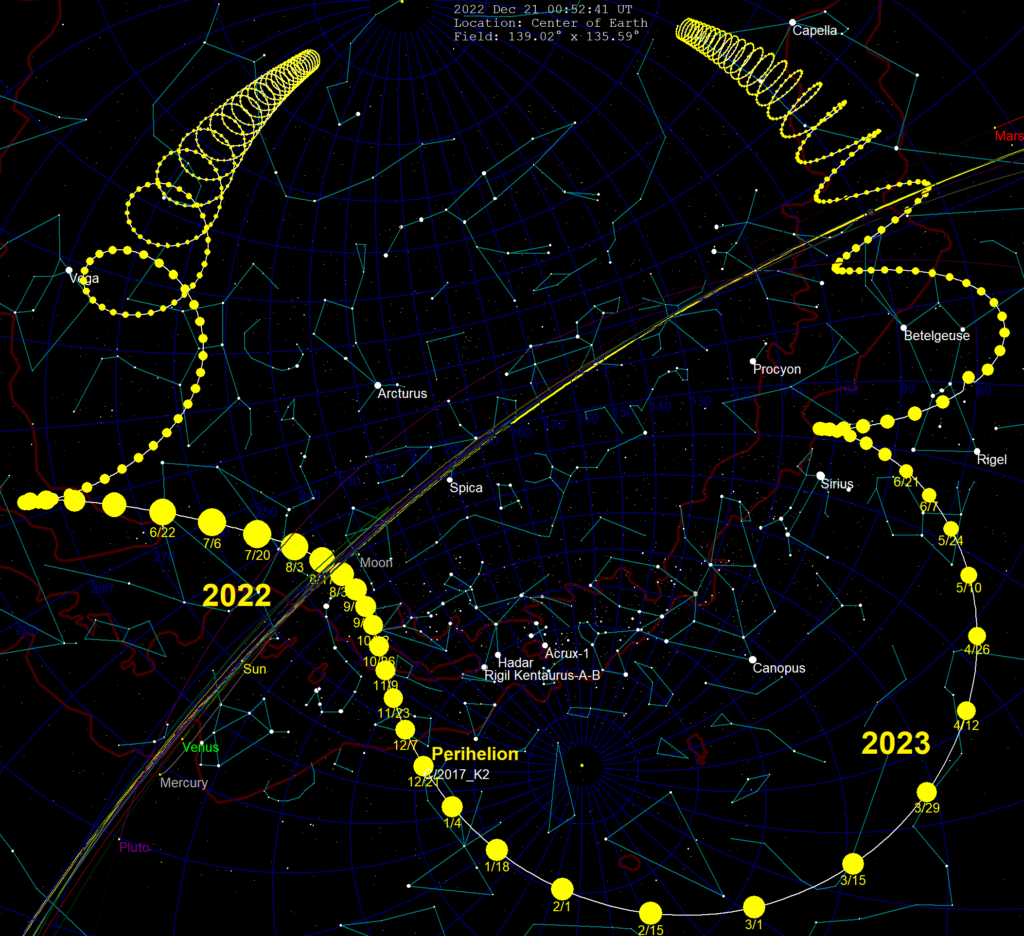C/2017 K2 (PANSTARRS) is a non-periodic comet with a hyperbolic orbit. It was opened in May 2017, then it
The name of Comet PanSTARRS sounds familiar, and here's why. Pan-STARRS is a sky survey designed to find new asteroids, comets, supernovae and other celestial objects.
How big is Comet C/2017 K2?
At the moment, experts are unclear to what extentThe comet's nucleus is large. Initial observations from the Canada-France-Hawaii Telescope suggest a core with a diameter ranging from 30 to 160 km. But observations with the Hubble Space Telescope showed that the core should be about 18 km.
 Photo: Hubble, NASA
Photo: Hubble, NASA
This means that it is large enough toscientists paid attention to it, but not as impressive as comets Hale-Bopp (60 km) and Bernardinelli-Bernstein (50 km). But don’t write off the C/2017 K2. If we compare it with objects on earth, it is almost twice as large as Everest. The height of its peak, Chomolungma, is 8,848.86 m.
The size of a comet's tail, or coma, is also actively debated by astronomers. The trail of dust and gas behind C/2017 K2 is estimated to be somewhere between 130,000 and 800,000 km across.
Scientists believe that comets that are locatedtoo far from the Sun, should not sublimate huge amounts of ice. This means that the activity of C/2017 K2 is probably due to the mixing of ice with substances such as nitrogen, carbon dioxide, carbon monoxide and molecular oxygen.
Is the earth in danger?
Unfortunately, the comet won't come close enoughclose enough to get a good look at the object. Even at closest approach, C/2017 K2 will still be further away from us than the average distance between Earth and Mars. But at least you can be calm - the planet is safe.
How to observe a comet?
The closest approach to the Earth will take place on July 142022. The problem is that a supermoon is expected on July 13 (this is the time when the moon is closest to the Earth and is fully lit at the same time). Perhaps there will be a strong illumination of the sky and it is worth trying to observe it now, while the sky is dark enough.
 The comet's trajectory. Photo:
The comet's trajectory. Photo:
Tomruen, SS 4.0
C/2017 K2 expected to fly in the distanceabout 270 million km from Earth. This is far enough away that the celestial object is visible to the naked eye. But with a good telescope, the comet can be observed, NASA representatives noted.
According to astronomers, comet C/2017 K2(PanSTARRS) has been moving from the Oort cloud for about 3 million years. This year it first became visible to small telescopes in the Northern Hemisphere in May and will remain visible until September. Then it will become closer to the southwestern horizon and accessible to observers from the Southern Hemisphere.
What's next?
After flying past Earth in July, C/2017 K2 will continueyour way to perihelion. However, it is unknown how it will behave as it approaches the star. Perhaps the object will become more active and brighter, or it will fall apart and disappear completely, leaving behind only a dusty trail.
Read more:
Look at the celestial "Titanic" that will run on nuclear power
NASA figured out how to look for life on Mars: the experiment showed where it could be
Astronomers have found planets that are different from Earth, but suitable for life